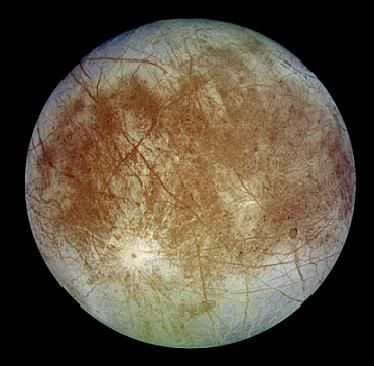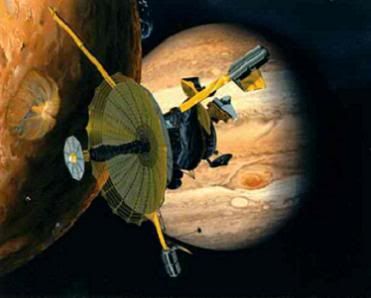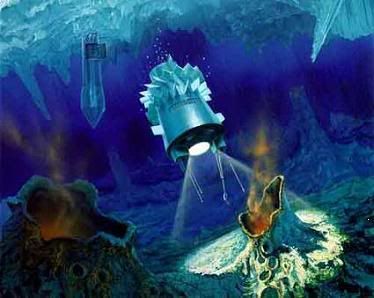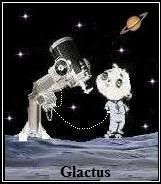Post by glactus on Nov 18, 2011 0:29:43 GMT
Data from a NASA planetary mission have provided scientists evidence of what appears to be a body of liquid water, equal in volume to the North American Great Lakes, beneath the icy surface of Jupiter's moon, Europa.

Europa
The data suggest there is significant exchange between Europa's icy shell and the ocean beneath. This information could bolster arguments that Europa's global subsurface ocean represents a potential habitat for life elsewhere in our solar system. The findings are published in the scientific journal Nature.

The Galileo Spacecraft at Jupiter
NASA's Galileo spacecraft, launched by the space shuttle Atlantis in 1989 to Jupiter, produced numerous discoveries and provided scientists decades of data to analyze. Galileo studied Jupiter, which is the most massive planet in our solar system, and some of its many moons.

A prope to the oceans of Europa
One of the most significant discoveries was the inference of a global salthingyer ocean below the surface of Europa. This ocean is deep enough to cover the whole surface of Europa and contains more liquid water than all of Earth's oceans combined. However, being far from the sun, the ocean surface is completely frozen. Most scientists think this ice crust is tens of miles thick.
"Now, we see evidence that it's a thick ice shell that can mix vigorously and new evidence for giant shallow lakes. That could make Europa and its ocean more habitable."
The study authors have good reason to believe their model is correct, based on observations of Europe from Galileo and of Earth. Still, because the inferred lakes are several miles below the surface, the only true confirmation of their presence would come from a future spacecraft mission designed to probe the ice shell.
Such a mission was rated as the second highest priority flagship mission by the National Research Council's recent Planetary Science Decadal Survey and is being studied by NASA.
To see 5 minute and 44 second video of a mission to Europa just click on the link below. Has sound. Full screen option bottom right.
www.youtube.com/watch?feature=player_detailpage&v=x0p7wqAN408

Credits: These are non copywrite images
Text by Space Daily.com
Video by YouTube

Europa
The data suggest there is significant exchange between Europa's icy shell and the ocean beneath. This information could bolster arguments that Europa's global subsurface ocean represents a potential habitat for life elsewhere in our solar system. The findings are published in the scientific journal Nature.

The Galileo Spacecraft at Jupiter
NASA's Galileo spacecraft, launched by the space shuttle Atlantis in 1989 to Jupiter, produced numerous discoveries and provided scientists decades of data to analyze. Galileo studied Jupiter, which is the most massive planet in our solar system, and some of its many moons.

A prope to the oceans of Europa
One of the most significant discoveries was the inference of a global salthingyer ocean below the surface of Europa. This ocean is deep enough to cover the whole surface of Europa and contains more liquid water than all of Earth's oceans combined. However, being far from the sun, the ocean surface is completely frozen. Most scientists think this ice crust is tens of miles thick.
"Now, we see evidence that it's a thick ice shell that can mix vigorously and new evidence for giant shallow lakes. That could make Europa and its ocean more habitable."
The study authors have good reason to believe their model is correct, based on observations of Europe from Galileo and of Earth. Still, because the inferred lakes are several miles below the surface, the only true confirmation of their presence would come from a future spacecraft mission designed to probe the ice shell.
Such a mission was rated as the second highest priority flagship mission by the National Research Council's recent Planetary Science Decadal Survey and is being studied by NASA.
To see 5 minute and 44 second video of a mission to Europa just click on the link below. Has sound. Full screen option bottom right.
www.youtube.com/watch?feature=player_detailpage&v=x0p7wqAN408
Credits: These are non copywrite images
Text by Space Daily.com
Video by YouTube


